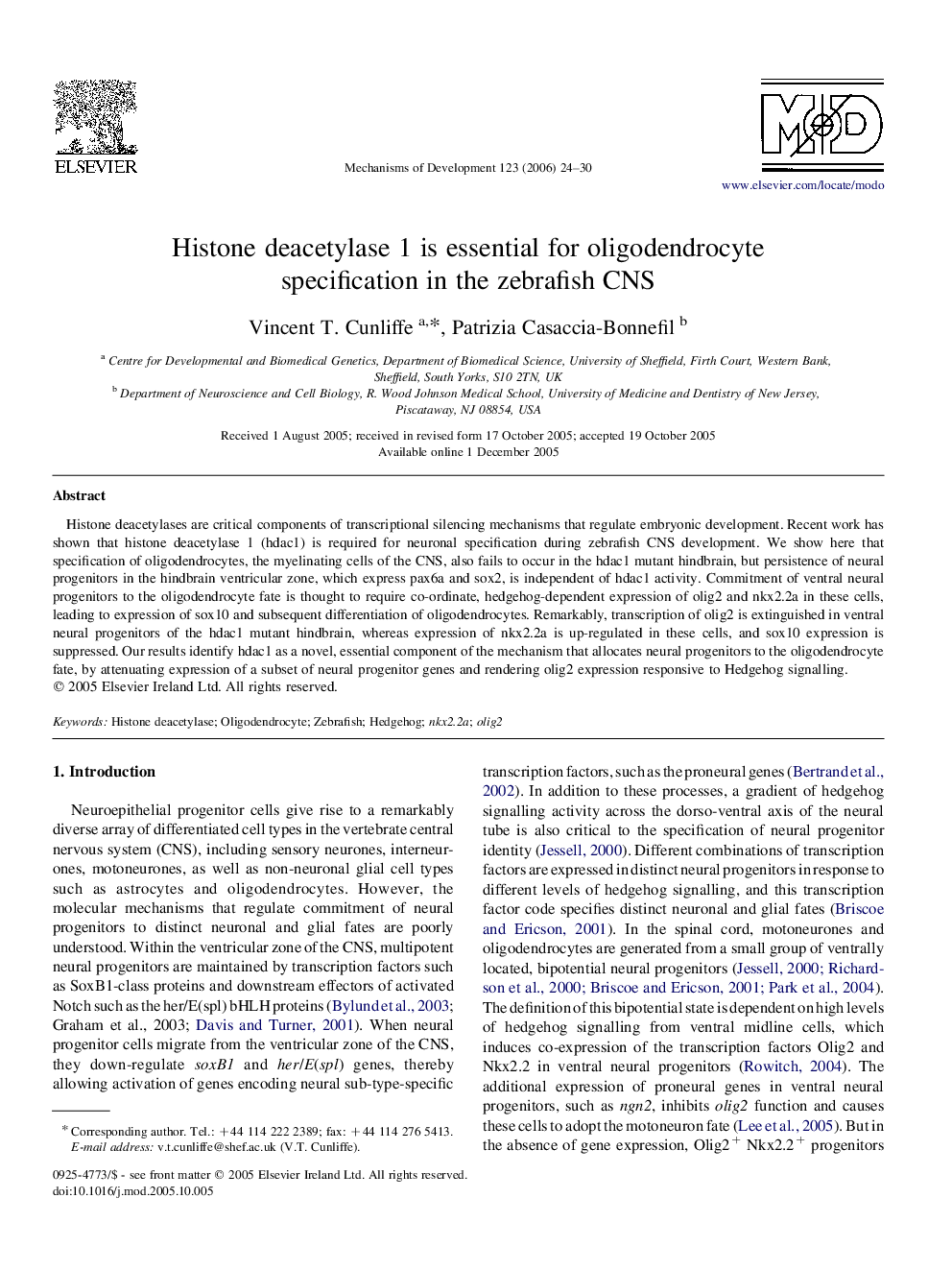| Article ID | Journal | Published Year | Pages | File Type |
|---|---|---|---|---|
| 2195329 | Mechanisms of Development | 2006 | 7 Pages |
Histone deacetylases are critical components of transcriptional silencing mechanisms that regulate embryonic development. Recent work has shown that histone deacetylase 1 (hdac1) is required for neuronal specification during zebrafish CNS development. We show here that specification of oligodendrocytes, the myelinating cells of the CNS, also fails to occur in the hdac1 mutant hindbrain, but persistence of neural progenitors in the hindbrain ventricular zone, which express pax6a and sox2, is independent of hdac1 activity. Commitment of ventral neural progenitors to the oligodendrocyte fate is thought to require co-ordinate, hedgehog-dependent expression of olig2 and nkx2.2a in these cells, leading to expression of sox10 and subsequent differentiation of oligodendrocytes. Remarkably, transcription of olig2 is extinguished in ventral neural progenitors of the hdac1 mutant hindbrain, whereas expression of nkx2.2a is up-regulated in these cells, and sox10 expression is suppressed. Our results identify hdac1 as a novel, essential component of the mechanism that allocates neural progenitors to the oligodendrocyte fate, by attenuating expression of a subset of neural progenitor genes and rendering olig2 expression responsive to Hedgehog signalling.
